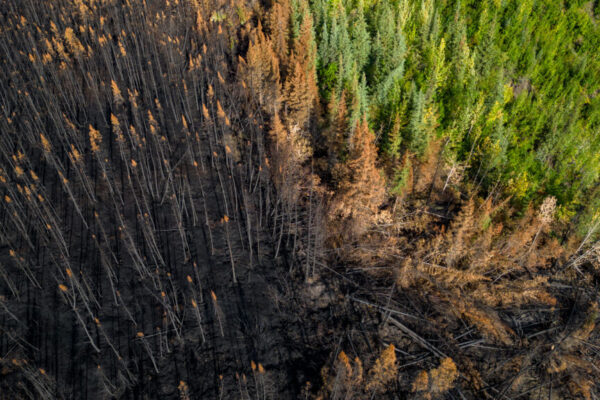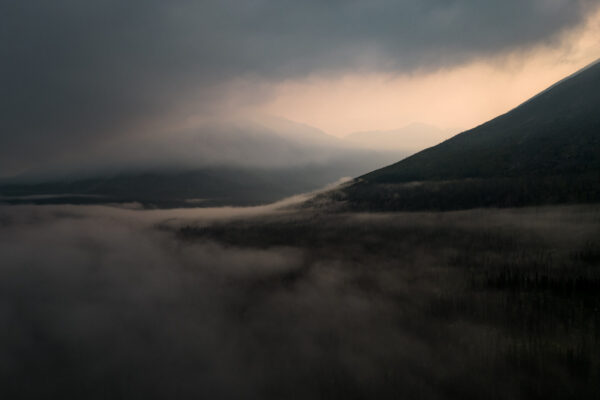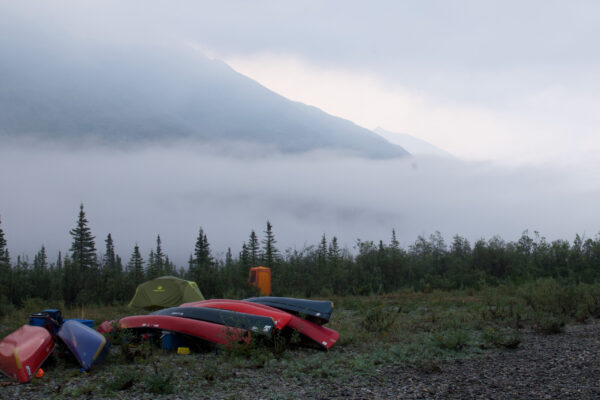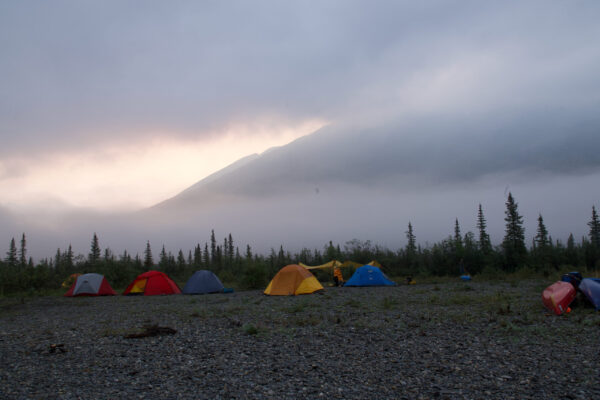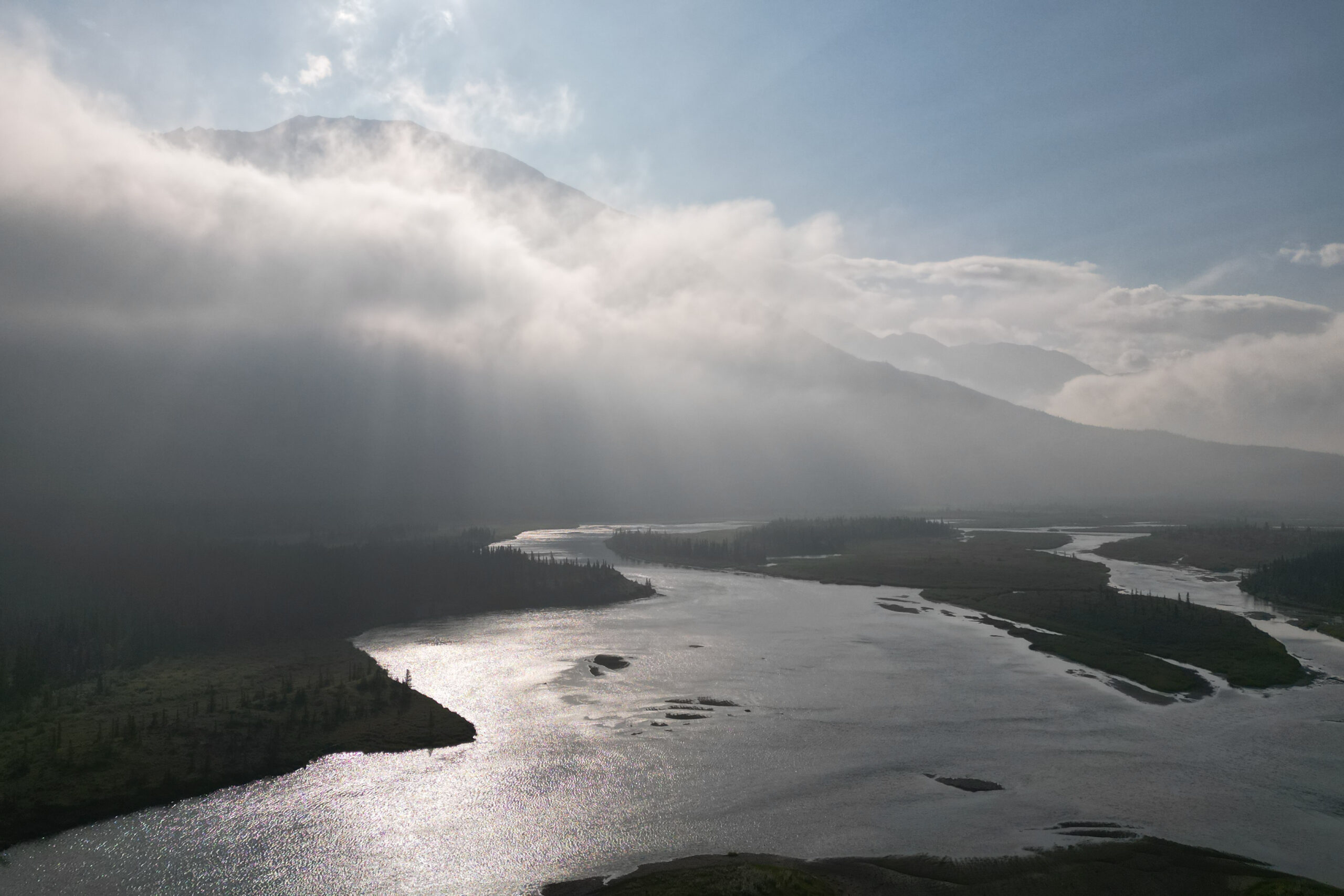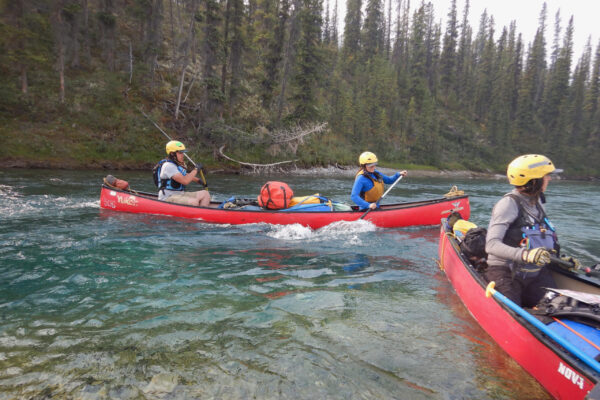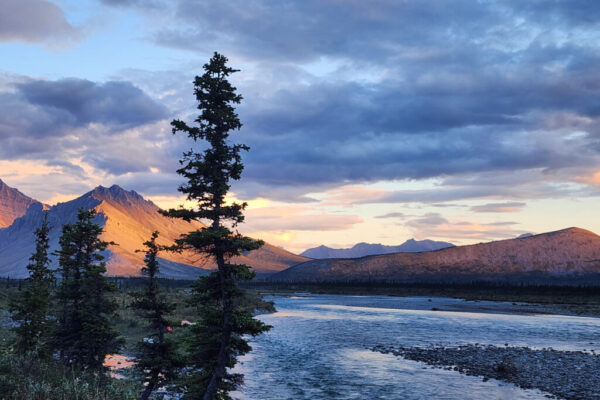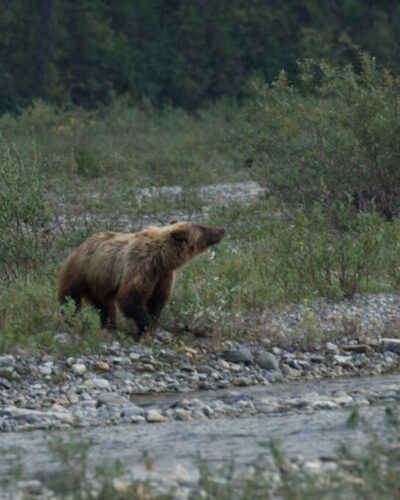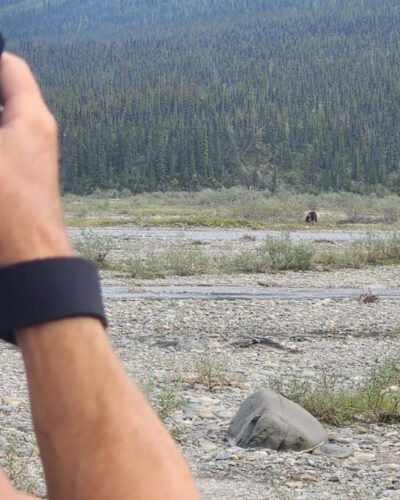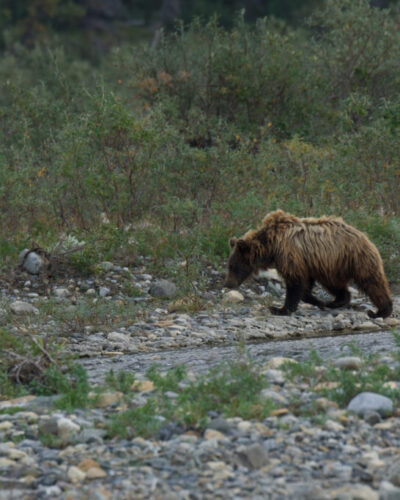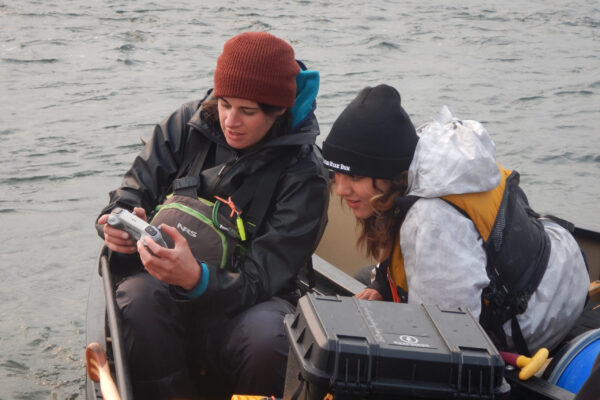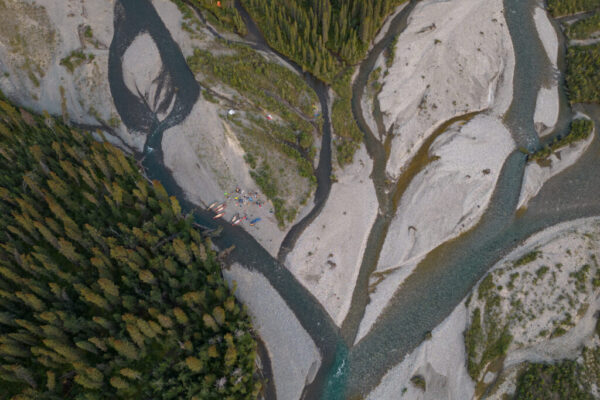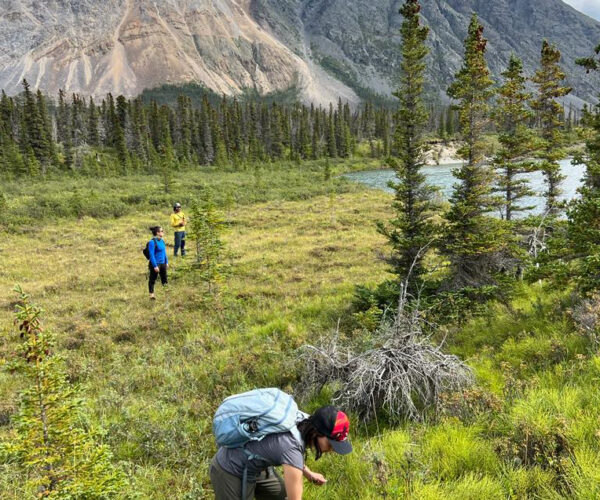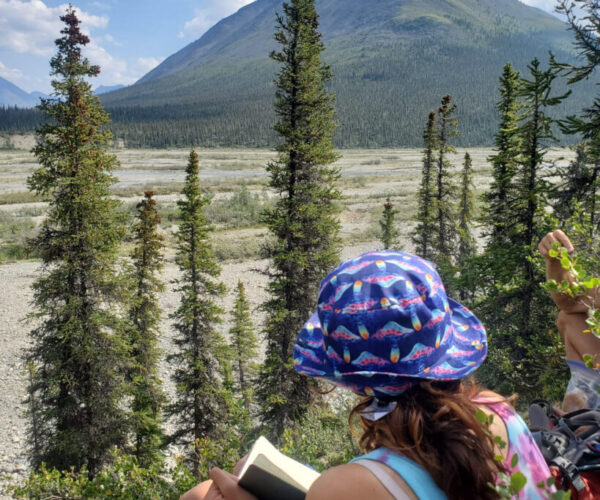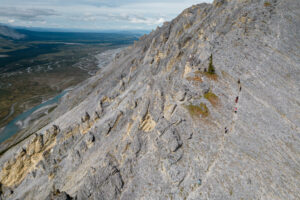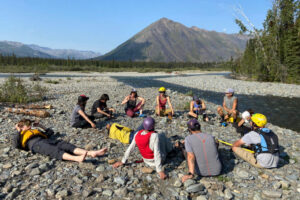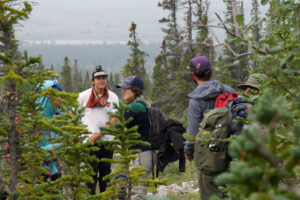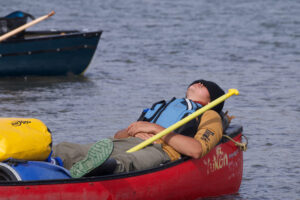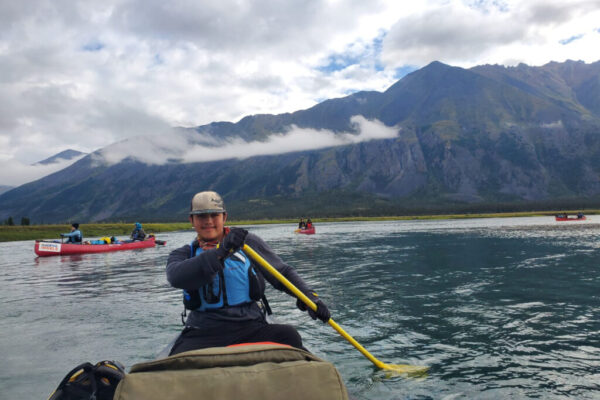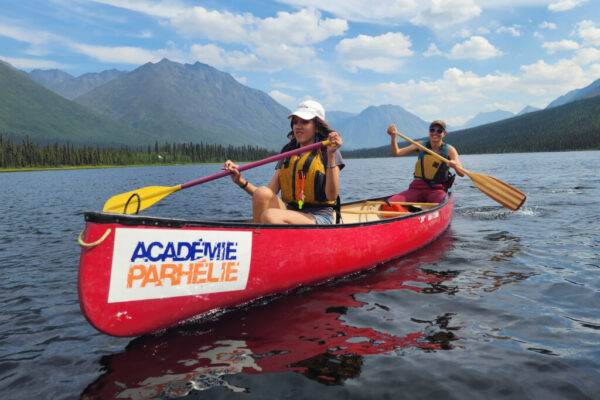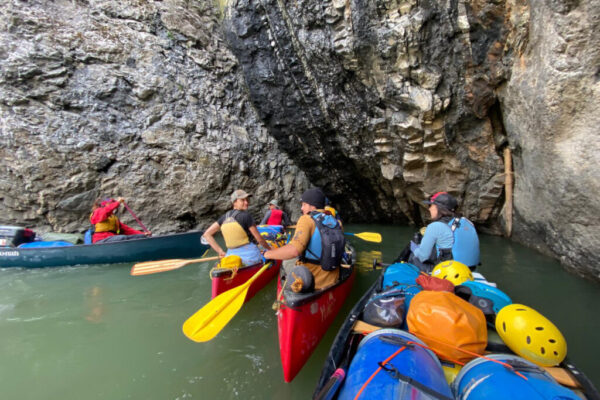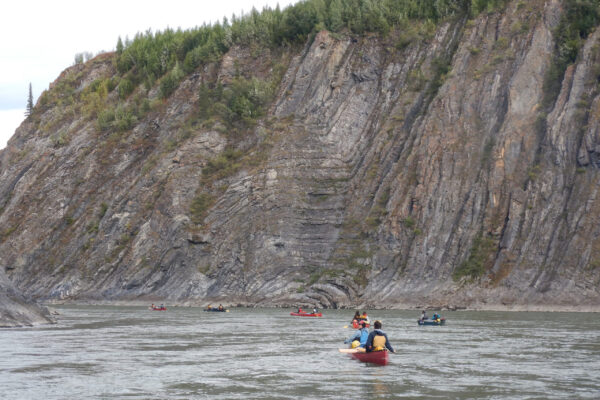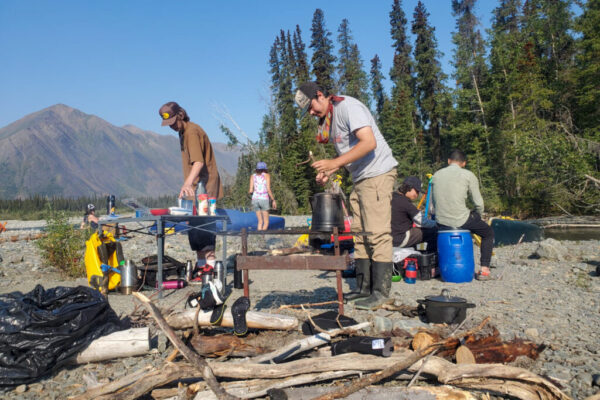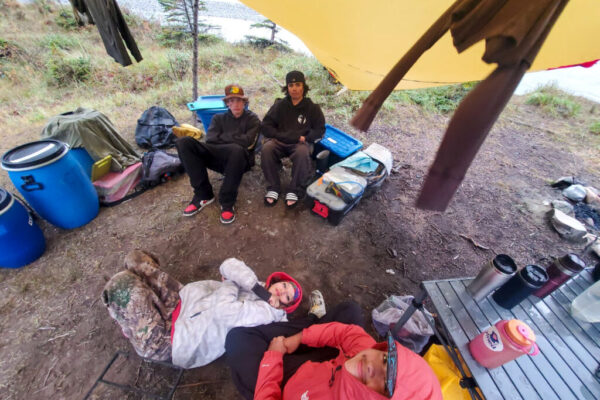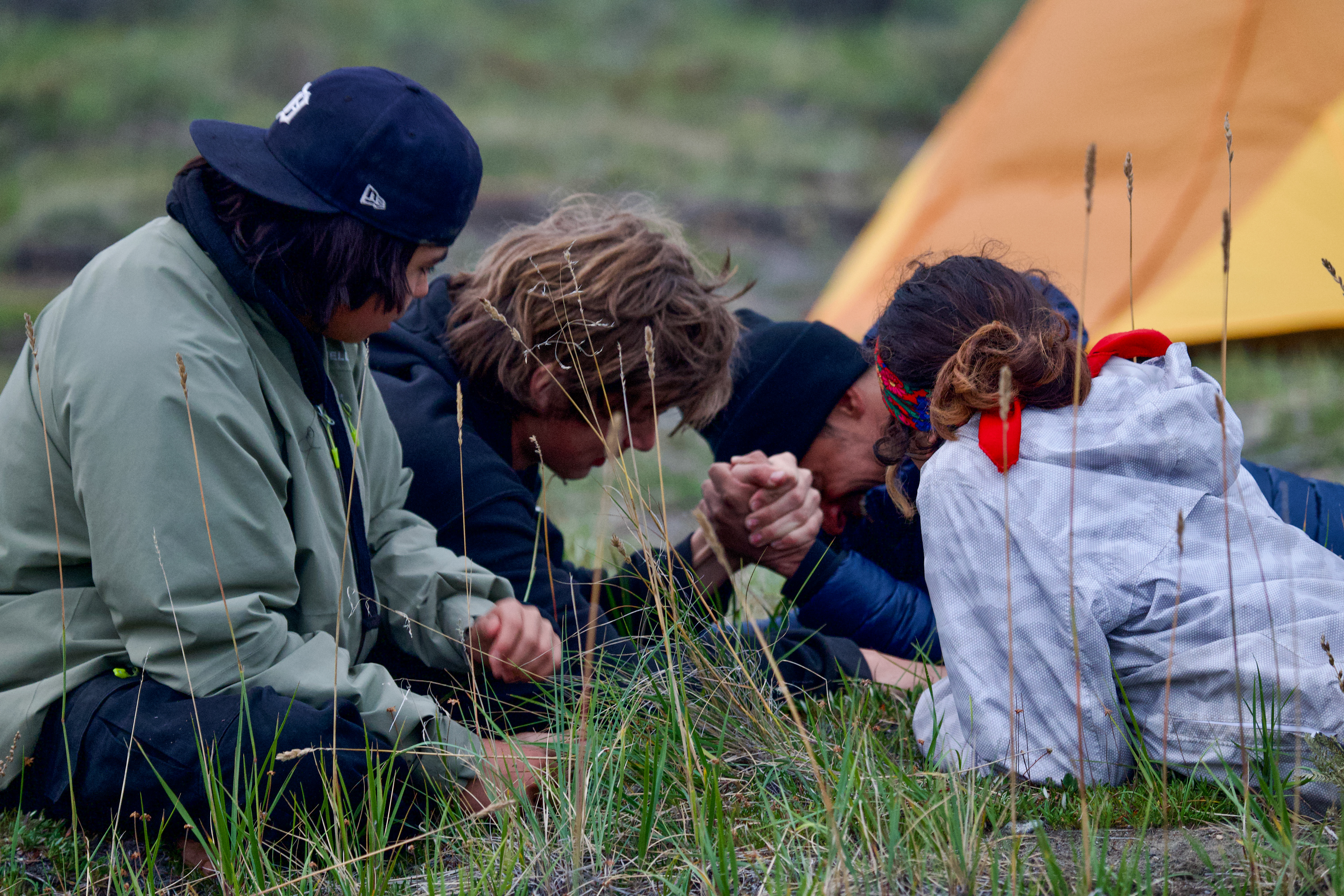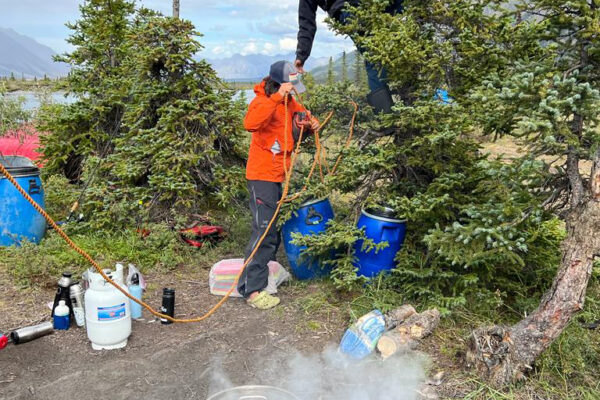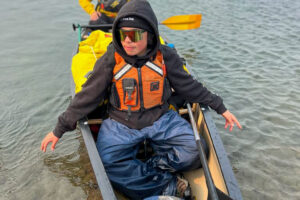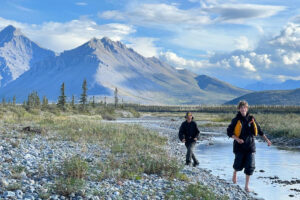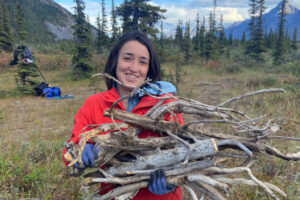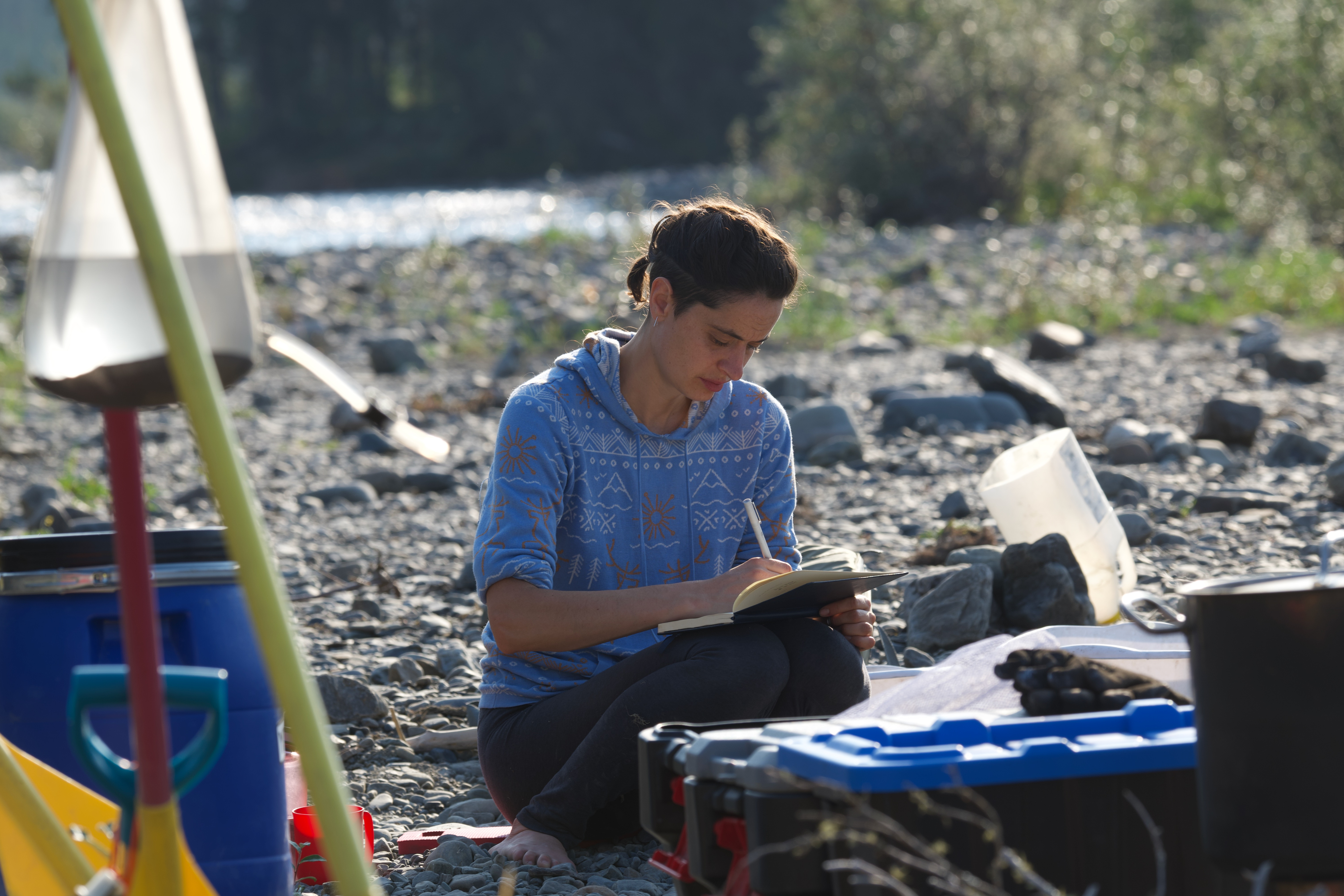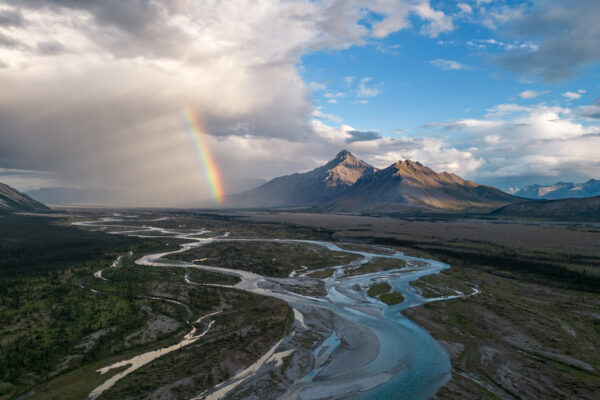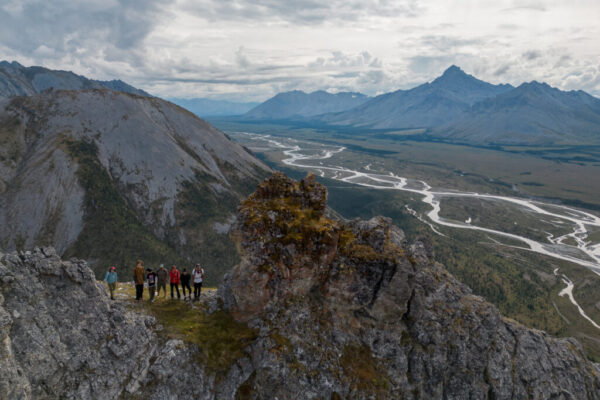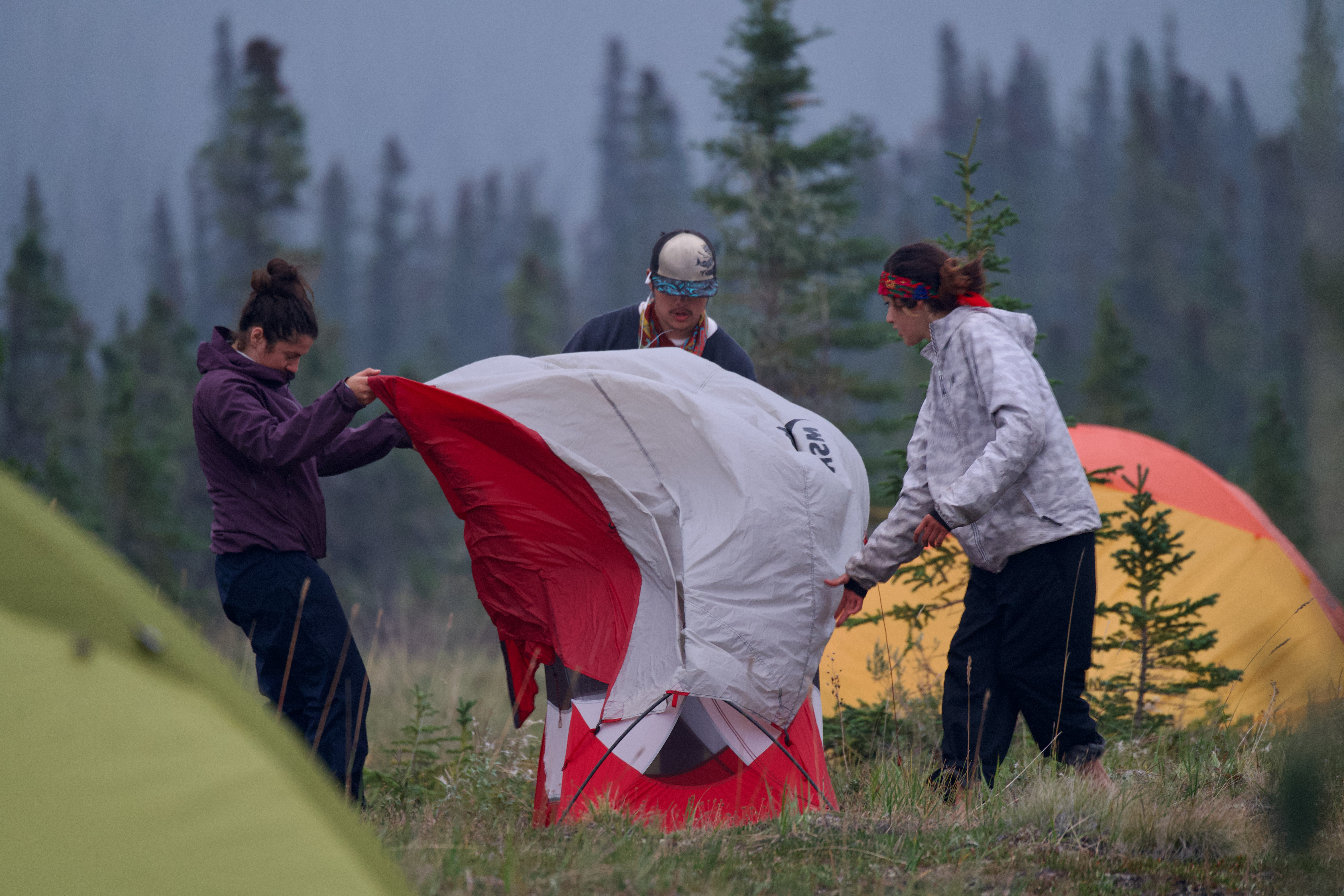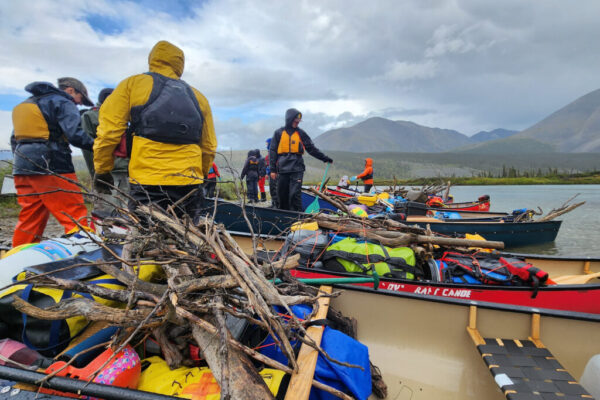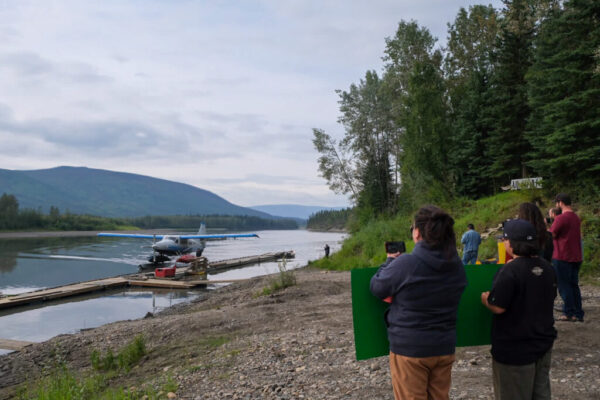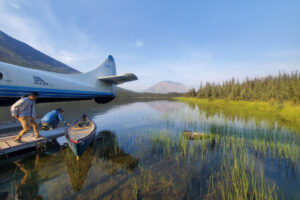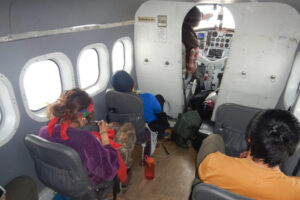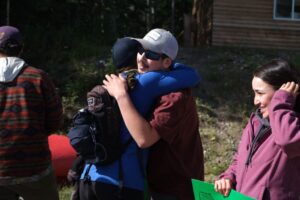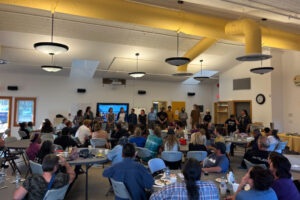Conversations with Voices from the Wind River
Written by Paula Gomez Villalba | February 17, 2025
The 2023 Wind River Trip on the traditional territory of the First Nation of Na-Cho Nyäk Dun and Tetlit Gwich’in began under the looming shadow of wildfires. On the day the group was set to depart, the entire community of Mayo was evacuated due to a nearby blaze. Flying into a nearby launching spot on float planes, the group soared above active fires and through mountain valleys cloaked in haze. Our Outreach Manager, Joti Overduin helped lead the trip and shared:
“At one point we weren’t sure if it was going to be safe for us to keep going. We had landed at McClusky Creek, portaged over and lined down the creek, and we were on the Wind River. But we had to take our time. Joel and I were the only ones that had done the river before, and I knew what was out there, but no one could see it at the beginning because it was all smoke.”
Having co-organized many trips over the years, our team has learned how important it is to build space into the itinerary for safety setbacks and rest. We worked tirelessly to ensure the group’s safety, maintaining constant communication with FNNND Lands and Wildland Fire in Mayo. The trip, co-organized by CPAWS Yukon, the First Nation of Na-Cho Nyäk Dun (FNNND), and the Yukon First Nation Education Directorate (YFNED), was defined by both challenges and incredible moments of connection. Youth participants included Chayce Moses-McLaren, Dominic Palmer, Lucien Trudeau, and Shalaya Boss-Blackjack, alongside youth mentors Chantel Blysak, Kadrienne Hummel, and Laurent Turgeon-Dharmoo.
It was very exciting to have most participants join us for a conversation at Voices from the Wind River after the screening of “Connections,” a short film recounting their journey. What participants shared felt like an invitation to hop into the canoe with them, to reflect on the transformative power of being on the land, and to celebrate courage, resilience, and community. Led by Joti, Jona Barr, and Ashwin Freyne, with support from Bethany Paquette, Joel Luet, and Virginia Mitford, the group made their way downriver despite the smoky conditions.
“I was joking with Lucien about how the mountains behind the smoke look like big muffins and that kind of stuck throughout the whole trip. Then we were hit with this big lightning storm that shook the ground and it was kind of scary—our canoes were filled with water halfway. The next day it got even smokier so we weren’t sure what was going on, but Joti had good contact back in Mayo with Wildland Fire. The next site we were at was the last point where we could be evacuated from a nearby lake called Angel Lake, and that was when all the fires got put out around and downstream from us. The rain helped us continue on.” — Kadrienne Hummel
“When we stayed at this one campsite [near Angel Lake], it was all smoky and you couldn’t see anything except for the water and where you were. We went to sleep and then in the morning I got up and I looked outside my tent, you could see everything! It was a really sunny morning, nice crisp morning air. You could see all the mountains, all the braidings of the river, and I was so amazed.” — Shalaya Boss-Blackjack
“The trip had so many highlights in terms of how beautiful it was and also how difficult it was with all the rain and the fires and the paddling; 16 days is actually longer than it sounds” — Ashwin Freyne
“We watched a grizzly bear family just bathing. It was a really hot day that day and they were playing around in the stream and eating bearoots—eating while they’re still in the stream. We were at a safe distance to just sit and eat some berries, watch them from afar, and have a break” — Kadrienne Hummel
Bethany Paquette (left) was our filmmaker and helped guide the boat down the river, she shared: “It was really rewarding. I would usually get out of my tent and I would throw up the drone before I even went to the bathroom, and the last thing I did before going to sleep would be making sure all my batteries were charging. It was a very different trip for me.”
“There was time set aside so that we could rest at each camp spot. We had time to hike the mountains nearby and see some cool waterfalls but I think for this trip there was an opportunity for me to practice ceremony. I said a little prayer and I asked ancestors and Creator to watch over us to ensure that we have a safe journey home.” — Kadrienne Hummel
“We were stopping to take water samples as we went down the Wind River. FNNND and its partners doing a lot of research on water as well as permafrost, as water is of greatest importance to FNNND. Our group also helped collect information for FNNND about some of the cultural sites along the way” — Joti Overduin
Joel Luet shared wisdom from his previous paddling down the Wind River that helped make the journey smoother. He highlighted a funny moment during Voices from the Wind River that speaks to teamwork and the unpredictability of river trips: “One afternoon we just got pounded by a thunderstorm, but as soon as we hit the shore everyone was just working to get the tarps up. Of course as soon as the tarps were up. the rain stopped—so I guess they did their job.”
“We canoed past coals that were still burning and winter roads that still [leave] a scar along the shorelines. This is a river that my ancestors traveled and I know that they lived in this area and traveled back and forth to the Northwest Territories since the early 1800s, and that’s only recorded history. To be out there on the land and to see this untouched wilderness and what’s at stake when we put exploration into the picture—it gave me that encouragement to be able to speak up for my First Nation.” — Kadrienne Hummel
“FNNND Elder Jimmy Johnny told us that there are stone axe stumps at certain sites. We were hiking and exploring hoping that we’d find some, and it was beautiful. I remember the moment where we saw what we thought was a stump that had been cut down with a stone axe, and realizing it was, and seeing more and more. Then that site just transformed to be more open. You could feel the people that have been in that place and it was incredibly exciting. We would just go from one step to the next and take photos.” — Joti Overduin
“Having youth on canoe trips, it builds so much empowerment within themselves. When we were at the Peel Canyon, we left camp and [Chase and Dom who were 15 at the time] canoed together through a small wave of rapids. They were behind us, so we were waiting, and we could just hear them holding their paddles up and hooting and hollering, and just being pumped that they achieved something” — Kadrienne Hummel
“When we were on The Peel (we had come from the Wind to the Peel), and we were in the canyon, maybe day 14. I think we had a super long day of paddling, but I just remember I felt like we had adapted so much as a group. There was a calmness, we all knew our role, we were all helping, and everyone just seemed really relaxed. It was a beautiful spot, but what I remember about it was just everyone’s relaxed nature about it.
Half the crew went across the river and hiked up to a little spot when the sun was going down, and half stayed. We could hear them singing and belting out a song across the river, and then when they came back we all kind of chilled out.
I could just feel like the difference from the beginning of the trip. It was so taxing to do all of this stuff with such long days. You’re so tired you just want to lay on the ground when you get there but there’s so much to do, like set up tents and food, and take care of your wet gear. But I felt like we were super strong by that point of the trip” — Chantel Blysak
“We all have these roles that we play in canoe trips and all our goofiness comes out in different ways and to be able to bond with community members in this way and have this life experience that only we share together—it’s like family. It’s so good to be reconnected and I’m so glad that everyone came out to support. We’re all here for the same reason, for the environment and for our love for the Yukon” — Kadrienne Hummel
“It was a really positive challenge because all of us had moments of peaks and valleys. There’s hard parts of the day, there’s really challenging parts of the river, physically you’re cold and you’re hungry. It’s just so taxing and then there’s these most amazing, memorable, beautiful moments. These big highs and lows happen everyday, and then we’re also trying to help lead and support the youth while they’re having peaks and valleys. I just learned the land is such a such a valuable place to do that, the land gives them the space and all the stuff they need to learn. I went through my own journey but I got to watch them figure it out too each day” — Chantel Blysak
“When we left the community of Mayo, there was a huge send off for us and people sent us with a stack of letters for the youth to read from the community along the way. When we got back, there was an even bigger feast and celebration. This is not just about the people on this trip, it’s the whole community” — Joti Overduin
These stories were shared during the Voices from the Wind River event held in November 2024. On-the-land trips like these are made possible through careful planning, strong relationships, and support from donors like you. They also rely on the conservation of landscapes that are ecologically and culturally important. We’re grateful for the decades of work from Peel nations, elders, allies, and others that gave the Peel Watershed the protection it deserves. As land planning continues and new generations connect with the land and water, we all share the responsibility to care for and uphold our values for today and tomorrow.
You can support community trips and the future of the Yukon’s wild spaces by donating to CPAWS Yukon.
Quotes edited for length and clarity. Photos taken by trip participants.

